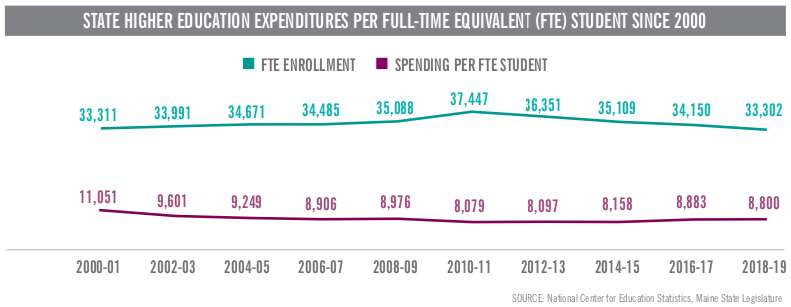
New report urges Maine to boost education funding
 Courtesy / Educate Maine, Maine State Chamber of Commerce
A 14-page report, "How is Public Education Funded in Maine?," is the 10th in a series by Educate Maine and the Maine State Chamber of Commerce.
Courtesy / Educate Maine, Maine State Chamber of Commerce
A 14-page report, "How is Public Education Funded in Maine?," is the 10th in a series by Educate Maine and the Maine State Chamber of Commerce.
Increased state funding for economically disadvantaged students, adult education and higher education are among the recommendations in a new policy brief by education and business leaders, released on Thursday.
"How is Public Education Funded in Maine?," a 14-page report, is the 10th in a series by Educate Maine and the Maine State Chamber of Commerce, and explores in-depth issues related to educational achievement and recommendations for strategic progress. The report covers spending from early education through post-secondary grades.
"Of all Maine's economic development strategies, education has the greatest return on investment," says the report, which is designed for newly elected school board members and lawmakers as well as the general public.
Noting the decline in the school-age population for the past several decades, and the increase in the proportion of children from low-income or disadvantaged background since the 2008 recession, the authors caution that the economic impacts of the pandemic will almost certainly increase the percentage of students in low-income households in coming years.
"The reasons for all of these trends are complex and would require a separate report to explore," the report says. "What matters for the purpose of this report is that public schools have fewer students but the students have more needs and require more specialized and remedial support — i.e., greater expense."

An analysis of state funding for higher education shows a 20% drop since 2000 to $8,800 per full-time equivalent college students. It also shows that while tuition and fees at Maine's community colleges and public universities remained flat from 2010-16 and had a modest increase in 2017, Mainers still pay more for college as a proportion of per capita than their regional peers.
As a remedy, the report calls for gradually increasing the share of state funding for higher education in Maine, saying that as the global economy contracts and shifts, "Maine needs to maintain and ultimately grow public investment in higher education, valuing it according to its importance in achieving a full recovery and future economic growth for our state."
'Position students for years ahead'
While juggling state budget challenges and education needs will be a tough in coming years, "with creative thinking and collaboration, we can weather this pandemic and position Maine students for success in the years ahead," said Dana Connors, president of the Maine State Chamber.
Jason Judd, Educate Maine's executive director, added, “With the election three weeks away, state education funding should be part of the dialogue. Education is fundamental to how we attempt to achieve fairness and equality of opportunity for our students. Yet Maine’s funding formula is complex and not widely understood. This document aims to inform state and local leaders as they make tough decisions in the months and years ahead.”
The full report can be accessed here.














0 Comments